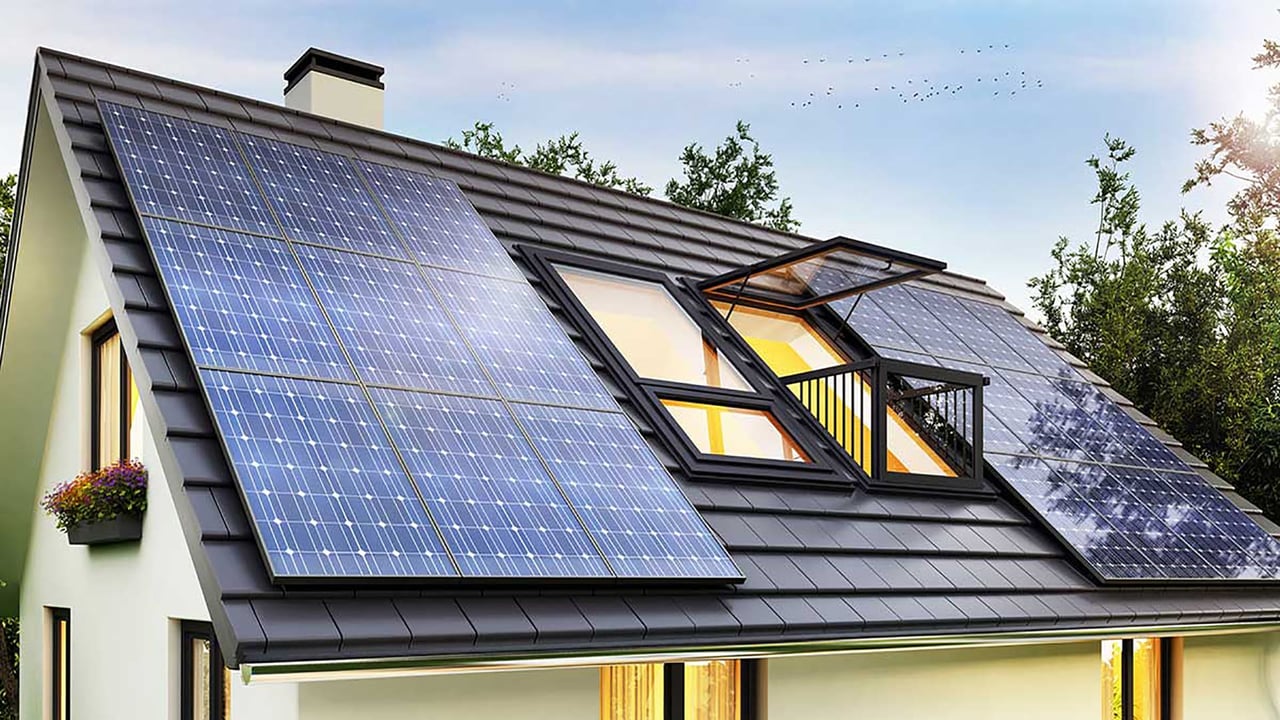Zero Energy Home Design In 16 Steps
Building and designing affordable zero-energy homes – the ultimate in energy efficiency – involves 16 integrated steps that utilize commonly available building materials and equipment along with easy-to-learn building strategies. By following these steps, you can build a new home that is affordable to build and cost less to own.
1. Begin With A Smart Design
Cost-effective zero net energy homes begin with smart design. Designers and architects, as well as builders, and homebuyers, should be familiar with all the energy efficiency steps involved in building a net-zero home. And the home should be designed so that builders and subcontractors can implement these steps as cost-effectively as possible. There are several design parameters to which builders should ask designers to pay special attention. Detailed communication between the builder and designer will ensure these critical details don’t fall through the cracks.
2. Use Solar Tempering
Using the sun for heating through south-facing windows during the winter lowers heating costs. Shading those same windows in summer lowers cooling costs. Solar tempering aims to optimize this passive use of the sun’s heat, without incurring the added cost of thermal mass needed to achieve maximum passive solar heating. Solar tempering should be addressed in the design phase. Avoid cathedral-style ceilings.
3. Optimize With Energy Modeling
The home’s energy use should be estimated during the design phase using energy modeling software to ensure that the goal of net-zero energy can be achieved while keeping costs down. Based on the results, design choices can be made or modified to balance building performance and construction cost.
4. Super-Seal the Building Envelope
Super-sealing the building envelope is the single most cost-effective measure builders can take to improve the energy efficiency of a zero-energy home. Several proven, air-sealing approaches are available. Choose an approach that matches your climate, skills, and budget.
5. Super-Insulate the Building Envelope
After making the house airtight, super-insulating the house may be the second most cost-effective strategy for creating a zero-energy home. Energy modeling, as mentioned above, can help you optimize the insulation levels for the ceiling, walls, and floors. Select framing strategies that make it easier to insulate the building envelope and minimize thermal bridging.
6. Use Highly Insulated Doors And Windows
Windows and doors are like big energy holes in a well-insulated, airtight building envelope and are the third most cost-effective opportunity for making a home energy efficient. Control window and door heat loss and gain by selecting appropriate window and door products, carefully locating them, and optimizing their size and orientation.
7. Add An Energy-Efficient, Fresh Air Supply
Since zero-energy homes are so airtight, a continuous source of fresh filtered air and moisture control is critical to its success. This need for ventilation has a silver lining: zero energy homes are healthier and more comfortable than standard homes. Highly energy-efficient ventilation systems, known as heat recovery ventilation (HRV) systems or energy recovery ventilation (ERV) systems expel stale air while recovering its heat and returning that same heat to the home with the fresh air.
8. Select an Energy-Efficient Heating and Cooling System
Highly efficient, cost-effective, heating and cooling systems are essential to meeting the net-zero energy goal. One good choice is an air source ductless heat pump, also called a mini-split heat pump. These systems are highly energy-efficient and don’t have the shortcomings of central, forced-air systems or the high costs of thermal heat pumps.
9. Heat Water Wisely
Water heating is often the largest energy expense in a home after heating and cooling. So it is important for designers and builders to select and locate efficient water heating technology, along with other measures, to minimize hot water use.
Heat pump water heaters use electricity and operate like a reverse refrigerator to make hot water in a tank very efficiently, making essentially 2-3 units of hot water for every unit of electricity used. This means they’re 200-300% efficient!
10. Save Energy With Home Automation IoT Devices
Smart Home Automation allows you to control your energy consumption. Smart home automation systems are sensitive to daylight and with this sensitivity, you can use your lighting system in economic mode. By keeping the room temperature at a constant value in your home heating or cooling systems, you can save energy while heating your home. With smart socket automation systems, it operates your energy-consuming household appliances in energy-saving mode.
You may even be worried about the possibility that your household items, for example, your iron, may be plugged in. Smart home automation saves you from this worry. smart home automation, which can connect to your smartphone, can cut off the power to your home appliance plugged in.
11. Install Energy Efficient Lighting
Minimizing energy use for lighting, while optimizing light for residents, is an important feature of zero-energy homes. LED lights are the perfect match for these tasks. They are more energy-efficient than CFLs, last many years longer, and contain no mercury. In addition, they can meet a variety of lighting needs from very bright white light to soft, warm light. Selecting the right LED lights for the task, locating lights strategically, and utilizing natural light as effectively as possible can drastically reduce a home’s energy use.
12. Select Energy Efficient Appliances and Electronics
Since zero-energy homes have highly energy-efficient building shells and use high-efficiency HVAC and water heating equipment, a new category, appliances, and electronics, becomes the most significant source of energy expenditure in zero-energy homes. As a result, selecting high-efficiency appliances and electronics becomes the final step needed to minimize home energy use.
13. Use The Sun For Renewable Energy
Grid-tied solar photovoltaic (PV) panels currently provide the most cost-effective form of renewable energy for a zero-energy home. They can power all the energy needs of a home including lighting, heating and cooling systems, appliances, and hot water. However, they are the most expensive component of a zero-energy home, and strategies for reducing or mitigating those costs are important to consider.
14. Use The Wind For Renewable Energy
If you live in a windy area, a home wind turbine is a good addition to your home. A home wind turbine is a device that converts kinetic energy from the wind to electricity. The turbine acts as a generator and produces clean power from wind energy, that is decarbonized or free from emissions. On average, home wind turbines need a minimum amount of wind in order to operate. This varies based on the model, but most clock in at around 6-7 mph. The rated wind speeds for full energy production are generally around 27 mph for standard units.
15. Use A White Roof
By decreasing the solar gain and heat retention of your home, a white roof also increases its comfort and reduces the heat island effect to which your home's dark roof contributes. ... If you're already re-roofing, or building a new residence, consider replacing shingles or asphalt with lighter-colored versions.
16. Pave The Way To A Green Driveway
A proven green alternative to paving that prevents runoff and helps protect the environment. The company Green Driveway offers green alternatives to paving, namely permeable stabilized gravel or grass surfaces ideal for driveways, parking areas, public walkways, and pathways. The stone or gravel acts as a natural filter and clears the water of pollutants. Using white or light-colored gravel reflects light and solar energy which keeps the home cooler.




